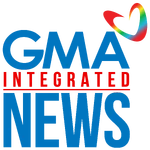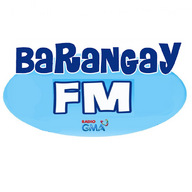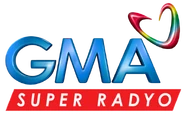| 1950–1965 | 1965–1972 | 1972–1974 | 1974–1979 | 1979–1992 |
| 2002–2011 | ||||
| 1992–1995 | 1995–1998 | 1998–2002 | 2002–2011 | 2011–present |
GMA Network Inc. is a Filipino media and entertainment group based in Diliman, Quezon City, Philippines. leading entertainment and media company. It is primary involved in radio and television broadcasting, cable television, providers, international channels with subsidiaries dealing in various media related businesses. The majority of its profits are derived from publicity and marketing incomes associated to television distribution.
The group owns and operates the (GMA Network and GMA News TV), the two national television networks as well as the (Super Radyo DZBB 594 kHz and Barangay LS 97.1), two regional radio networks (Super Radyo and Barangay FM). GMA television network in particular is the largest contributor to the group's, generating, revenues rose 22 percent of the group's total annual revenue mainly from selling airtime to advertisers. It also operates three international channels (GMA Pinoy TV, GMA Life TV and GMA News TV International), along with subsidiaries dealing in Other companies under GMA's the film and television production and distribution (GMA Films), music production and publishing (GMA Records), publishing firm (GMA Licensing) talent development and management (GMA Artist Center) a number of internet and digital converging technology and new businesses such as cellular telephony (GMA New Media) from pay TV and broadband internet provider (My-HD and MyGMA), entertainment television content (Citynet Network Marketing and Productions) video on demand platform (MyGMA Internet TV) and and pay TV content provider and distributor (Scenarios, Inc.) in the Philippines. The company is a publicly traded company on the Philippine Stock Exchange.
RBS Channel 7
1950–1965
1965–1972
The origin of GMA Network can be traced back to Loreto F. de Hemedes Inc. through DZBB, which started airing its radio broadcast on March 1, 1950, and officially launched as a local radio station in Manila in June 14, 1950 and owned by Robert La Rue “Uncle Bob” Stewart, an American war correspondent. Venturing into television in the 1960s, Stewart started its television station through RBS TV Channel 7 in the DZBB-TV station on October 29, 1961, the Philippines' third terrestrial television station. It produced shows like Uncle Bob’s Lucky Seven Club, a child-oriented show aired every Saturdays; Dance Time with Chito; Lovingly Yours, Helen; GMA Supershow (formerly Germside and then Germspesyal) and various news programs like News at Seven. And in 1963, RBS launched its first provincial television station in Cebu, DYSS Channel 7. In the same year, from Loreto F. de Hemedes Inc, the firm was formally renamed to Republic Broadcasting System, Inc.
1972–1974
In September 1972, then President Ferdinand Marcos declared Martial Law, ordered the closure of all television station in the Philippines except for channels 9, 13 and 7. But in late-December 1972, RBS was allowed by the government to return on the air this time by its blocktime agreement with the National Media Productions Center (NMPC), however with limited three-month permits. But due to limited licenses, difficulty in financial obligations, and disallowing foreign citizens and entities from owning and operating media companies in the Philippines. GMA was later allowed to operate with a restricted three-month provisional franchise license. In the latter part of 1973, then Republic Broadcasting System was forced to cede majority control and later on reopened under new ownership with a new identity as GMA Radio-Television Arts.
GMA Radio-Television Arts
1974–1979
In 1974 as GMA introduces the viewing public to a new GMA Radio Television Arts it employs a new symbol and utilizes the square-rounded edge insignia. To catch the attention of local viewers, GMA embarked into marketing promotion and uses the new slogan “Where You Belong” in 1979 and it was used for the next 20 years. In 1975, RBS, including its TV and radio stations, were sold to a triumvirate composed of Felipe Gozon, Gilberto Duavit, Sr., and Menardo Jimenez who introduced a programming concept catering to the new audience. The new management acquired new equipment and introduced new programs, a new name, GMA (Greater Manila Area) Radio-Television Arts, and a new identity, "Where You Belong."
From circular number 7 logo, GMA developed its on-screen symbol into a bigger number seven (a three angles upward bar using red, green and blue colors) removing the circular border. Aside from retaining the square-rounded edge box, the word “GMA” and “ARTS” changes its color to white similar to the lower case word “radio television” and still uses the same Serif old stylized Garamond and San Serif Helvetica Neue Bold Condense fonts. In addition the word “greater” was placed between the insignia and number 7.
Again in 1978, GMA insignia changes into another version restoring the circular logo, now in black background and replacing the word “greater” to Serif font “GMA”. In the 1980s, GMA again changes its on-screen logo scrapping the circular number 7 and using only the GMA Radio Television Arts sign reverting its original yellow color for “GMA” and “ARTS" text while “Radio Television” in white complements the pale blue background in black outline.
1979–1992
In 1979, The blue circular seven logo, which Republic Broadcasting System (RBS) used for the past years, has developed into iconic in local television, mostly due to the existence of the same logo in key markets. It looked like the WABC and KABC logo. Like in any other countries, which broadcast on channel 7 frequencies, circular seven logo is commonly used. Later on, the circular seven logo was used opposite to the square rounded edge GMA symbol in network presentation on-screen, although many current variations of the circular seven have incorporated to GMA logo, then Republic Broadcasting System changed its corporate identity to GMA Radio-Television Arts (GMA stands for Greater Manila Area, the network broadcast area). The word “GMA” and “ARTS” uses a Serif old stylized Garamond font in yellow color. The letter “R” extending its ribbon rounded tail underneath the letter “T” of ARTS while the word “Radio Television” uses a San Serif Helvetica Neue Bold Condense font in white toning the pale blue background with black outlines.
A different version was introduced in the latter part of 1979 placing “Where You Belong!” slogan angles upward below the insignia using a black Serif font. Another adaptation was made in 1986 using multi-color colors. As GMA prepares for a network reformatting, for the first time GMA used the beaming rainbow colors of red, yellow, green and blue. The same “Where You Belong” slogan were used, this time in a different Serif font.
During the 1980's, a variety of logos were used to complement the present event, especially live programs. One example of this is, when GMA has the exclusive rights to broadcast Miss Universe pageant, it employ the standard GMA Radio Television Arts logo while embossing a crown-like object above it. In the late 1980s, GMA began using elements from WJZ-TV's "It's A Good Feeling to Know" jingle package to make a new version of their "Where You Belong" jingles.
When democracy in the Philippines was restored in the People Power Revolution in 1986, television stations began to air, some with their original owners. The political instability of the country also added to the station's burden, when soldiers stormed into the studios for two days in a part of coup attempt to topple then President, Corazon Aquino. In 1987, it became the first television network in the country to provide a new dimension to viewers by broadcasting the network's programs in full stereo (dubbed as GMA StereoVision), it opened its high-end live studio, the Broadway Centrum, boosting its local programming, and inaugurated its 777-foot Tower of Power located along Tandang Sora, Quezon City, the tallest man-made structure in the country on November 7, 1988. until 1998 when it switched to the current 100 kilowatt capacity.
All logos including the present one were placed at the top rightmost corner of television screens. Only live breaking news and public affairs programs uses the lower left corner portion of television screen.
Originally, the rainbow consisted of red, yellow, green, and blue colors. Within the early 1990s, two colors: orange and purple were added to the rainbow.
The rainbow later became the symbol of GMA and underwent two facelifts, until the rainbow was replaced by the Kapuso symbol in 2002. The rainbow not only became GMA's logo in the 1990s and early 2000s to keep up with the new technologies and to coincide with its stronger signal reach throughout the Philippines and in Southeast Asia, but it also inspired the Kapuso symbol, as the new symbol contained all of the rainbow's colors.
GMA Rainbow Satellite
1992–1995
The first incarnation of the 'rainbow'. In preparation for the launching of Tower of Power and as part of a new ambition to reach viewers abroad, GMA again re-branded its network identity. The new logo is a rainbow beamed by a satellite with the colors of red, orange, yellow, green, blue, indigo and violet. The letters, GMA in blue color uses a San Serif Century Gothic Extra Bold font. Underneath its logo is their slogan from 1975, Where You Belong in Serif style font.
GMA Network
1995–2002
1995–1998
A modification was made to the "Rainbow Satellite" logo in 1995. In this version, GMA's rainbow was curved, and the "Rainbow Satellite" and the "Where You Belong" slogan was dropped. In print ads, it was shown enclosed by a box. On May 16, 1996, GMA formally changed its corporate name to GMA Network Incorporated, with GMA now standing for Global Media Arts.
The new logo reflected and signified "GMA" new status as a media company reaching out to the entire world, investing not only in radio and TV broadcasting, but also in cinema, and UHF channels, music recording, talent agency, international media, digital media, and other media platforms.
1998–2002
The final logo of the 'rainbow' was launched on September 1, 1998. In this version, the satellite was dropped from the logo, leaving the GMA text and the rounded rainbow behind, and also returning the "Where You Belong" slogan. The gradients and texture on the GMA text were also eliminated.
2002–present
2002–2011
In 2002, after having used the rainbow logo for a decade, GMA finally abandoned its rainbow logos for a brand new logo in an effort to localize and transform its image into a more intrinsic Filipino. The new logo features a rainbow colored heart-shaped logo, the Kapuso, represented by a new slogan Kapuso ng Pamilyang Pilipino, Anumang Kulay ng Buhay (One in Heart With the Filipino family, In Whatever Colors of Life), and a Century Gothic Bold font for the letters. The rainbow colors in the heart are an ode to the previous rainbow logos that defined GMA from 1992 to 2002.
The logo was launched on October 27, 2002, during an episode of the network's longest-running Sunday afternoon entertainment show SOP, and would go on to be the longest-lived logo of the network.
2011–present
In 2011, the GMA logo was modified. The "GMA" letters part is seen to be more embossed and the logo has a "glow" effect.
Other
Template:Other
External links
GMA Network Inc.
| ||||
|---|---|---|---|---|
| Part of GMA Holdings Inc.
Predecessor companies: Owner Divisions
Subsidiaries GMA Entertainment Group GMA Network Films, Inc. Affiliate Film & TV productions and TV studio partners Telecommunications and digital media Licensed products TV Stations Television channels Radio networks
YouTube Channels Web TV, Internet and Social media Inactive Former TV Productions Defunct Notes: |
| Eurovision/Euroradio ARD |
ARMR |
ARMTV |
BBC |
BHRT |
BNR |
BNT |
ČRo |
ČT |
CyBC / RIK |
DR |
ENRS |
EPTV |
ERR (ETV) |
ERSL |
ERT (ERA) |
ERTU |
GPB |
FMM (F24 | MCD | RFI) |
France.tv |
HRT (HR) |
İCTI (İR | İTV) |
JRTV |
Kan (IPBC) |
LNC |
LRT |
LSM (LR | LTV) |
MMD |
MRT |
MTVA (Duna) |
NPO |
NRK |
NSTU |
ORF |
PBS Ltd. |
PR |
RAI |
Radio France |
ROR |
RT |
RTBF |
RTCG |
RTÉ |
RTL |
RTP |
RTS |
RTSH |
RTVA |
RTVE (RNE | TVE) |
RTVS |
RTVSLO |
RÚV |
SMRTV |
SNRT |
SRG SSR |
SRT (SR | SVT | UR) |
TDA |
TG4 |
TL |
TRM |
TRT |
TT |
TV 2 (Denmark) |
TV 2 (Norway) |
TVP |
TVR |
UKIB (ITV | S4C | STV) |
VR |
VRT |
Yle |
ZDF Associated members Approved members Competitions Awards ceremonies Defunct competitions |
Template:TV stations in Metro Manila


















